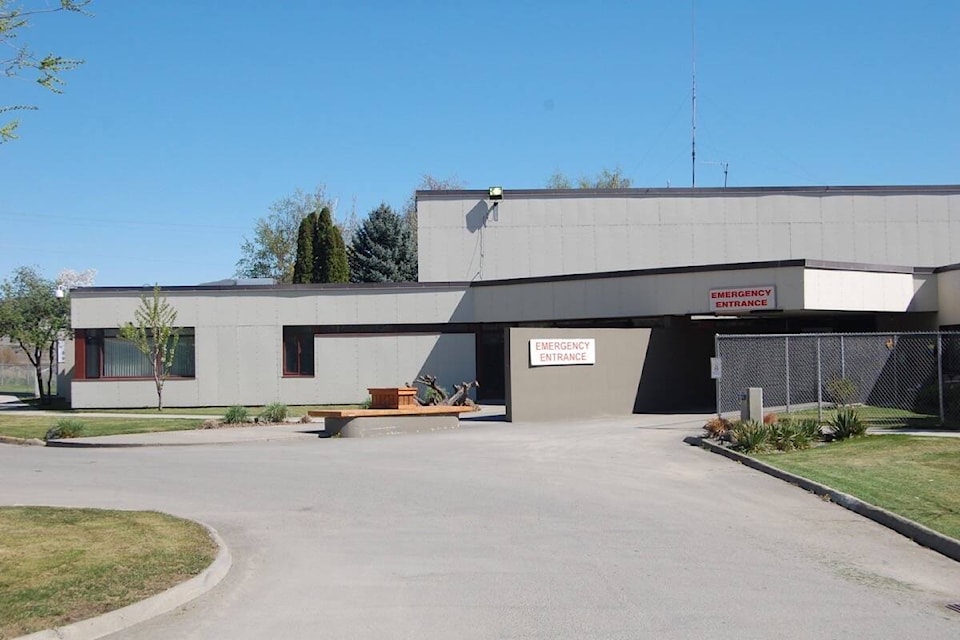Residents who rely on the Emergency Department at the Ashcroft Hospital should find out soon if the temporary overnight closures announced by Interior Health will be lifted, or remain in place as IH battles with ongoing staff shortages.
On Jan. 18, IH announced several temporary closures and reductions in service at a number of sites, including Ashcroft, where the overnight hours at the Ashcroft Hospital were reduced in order to stabilize daytime services. The service adjustments also affected sites in Clearwater, Lillooet, Barriere, Invermere, and New Denver, as well as some outpatient ambulatory clinics, primary care services, adult day programs, and non-urgent home health services.
IH said at the time that the service adjustments were needed in the face of staffing challenges caused by the Omicron variant. The adjustments were slated to be in place for up to four weeks, but at a press conference last week IH President and CEO Susan Brown said that she did not think there would be a blanket resolution to the reductions.
“We have already restored a few, and the intent is to get back to normal as soon as possible. We will monitor the situation daily to get things up and running as soon as we can, but it’s a day by day thing.
“We think we’re over the hump, and hope to honour the original four weeks. As soon as we make a decision to reinstate something we will work with communities to get the news out as quickly as possible.”
Brown was asked about the overnight closures at the Ashcroft ED, which had been taking place even before the reductions were announced on Jan. 18, and whether residents could expect them to continue when the reductions end.
“There is no intent to erode or reduce rural health care services,” she said. “We will continue to work with the Ashcroft community to look at a model that will really serve the community well.
“We realize that when there is a last-minute closure it’s not reliable for the community, and we’re doing all we can to stabilize the situation. We will work hard to get services reopened [in Ashcroft], and then continue to work with the community to maintain and improve those services.”
Brown said that staff sick calls over the past four weeks have been “far beyond” what is usually seen during respiratory/flu season, with about 900 sick calls a day at its height. She added that one-third of those sick calls were due to the Omicron variant.
“Peaking to almost 900 a day at the worst times and 800 a day on an average — one-third of that is related to Omicron, so you can see that almost 33 per cent of that was greater than what we would anticipate on any other given year and day.”
At the same time, she said, Interior Health has been dealing with a Public Health Order requiring all health care workers to be fully vaccinated against COVID-19. As a result, IH has lost around 895 health care workers — approximately four per cent of its total staff — who did not comply with the provincial mandate, on top of vacancies that already existed.
The Okanagan region was the hardest hit, losing 426 employees, while Thompson/Cariboo/Shuswap lost 230, Kootenay-Boundary lost 111, and the East Kootenay lost 88. An additional loss of 60 workers is classified as regional.
Brown said that the region’s two tertiary hospitals have been running at or above capacity, with Kelowna General at 115 per cent occupancy and Royal Inland at around 100 per cent. As of last week some 1,200 elective surgeries had been cancelled, and Brown said that total would increase to about 2,700 across IH if the closures and reductions lasted the full four weeks. However, she added that people whose elective surgeries have been cancelled due to the spread of Omicron will be prioritized when surgeries resume.
“We’ll do our best to catch up as soon as possible, but we need to have and maintain safe staffing levels,” Brown said, acknowledging that the fire in Lytton — which destroyed St. Bartholomew’s Health Centre — has had a “devastating” impact.
“People have migrated to other sites and put pressure there. We have to monitor everywhere, but the tertiary sites are critical. Stabilizing Royal Inland stabilizes the small supporting communities. When RIH doesn’t fare well, it really pulls from staff in the surrounding areas in the west, so it can cause instability around them.”
She noted that positivity rates are coming down slightly. “I think we’ve passed the peak, but it’s coming down slowly. We’ll be watching that, and we want to see the indicators drop even more. We’re looking to get back to regular service and what that will look like.”
editorial@accjournal.ca
Like us on Facebook and follow us on Twitter
